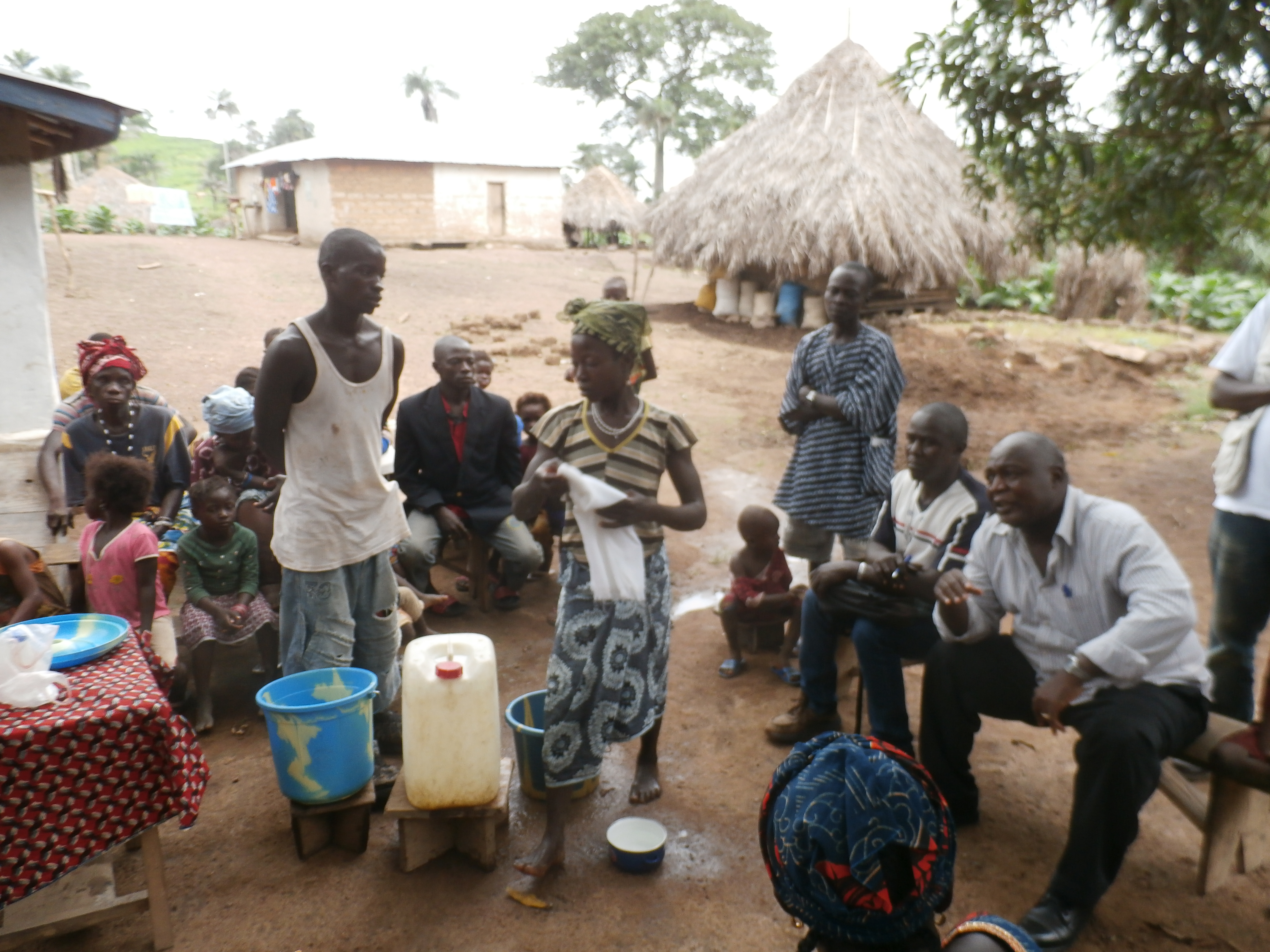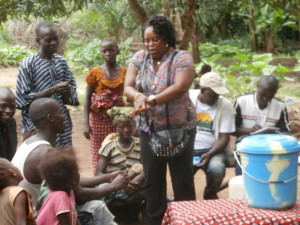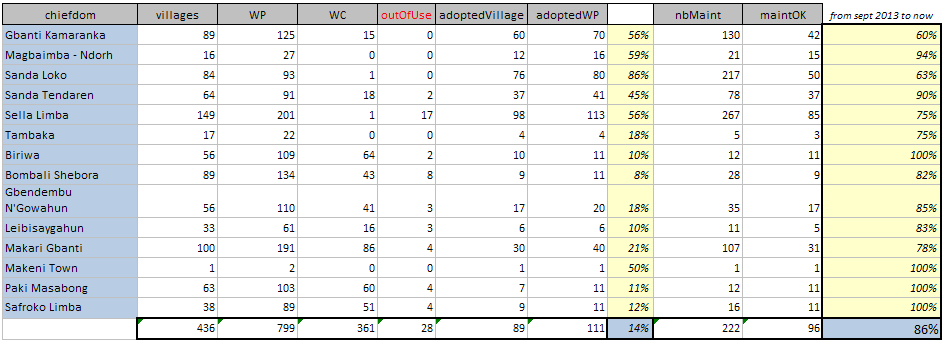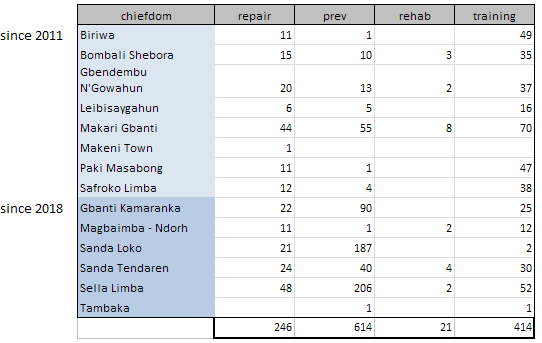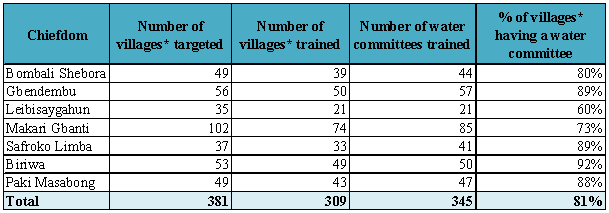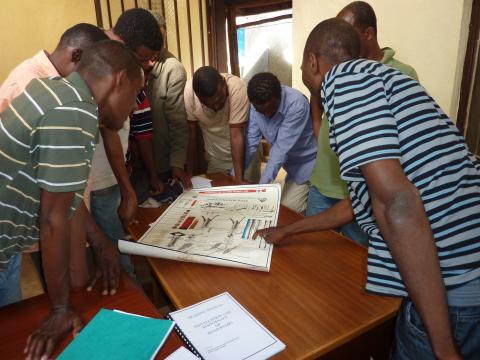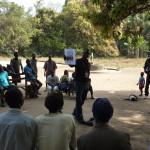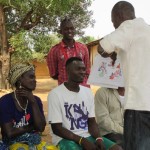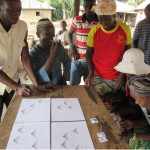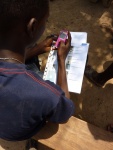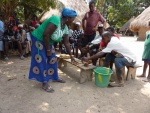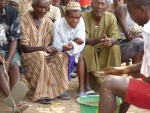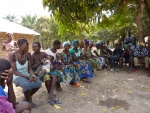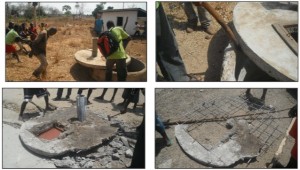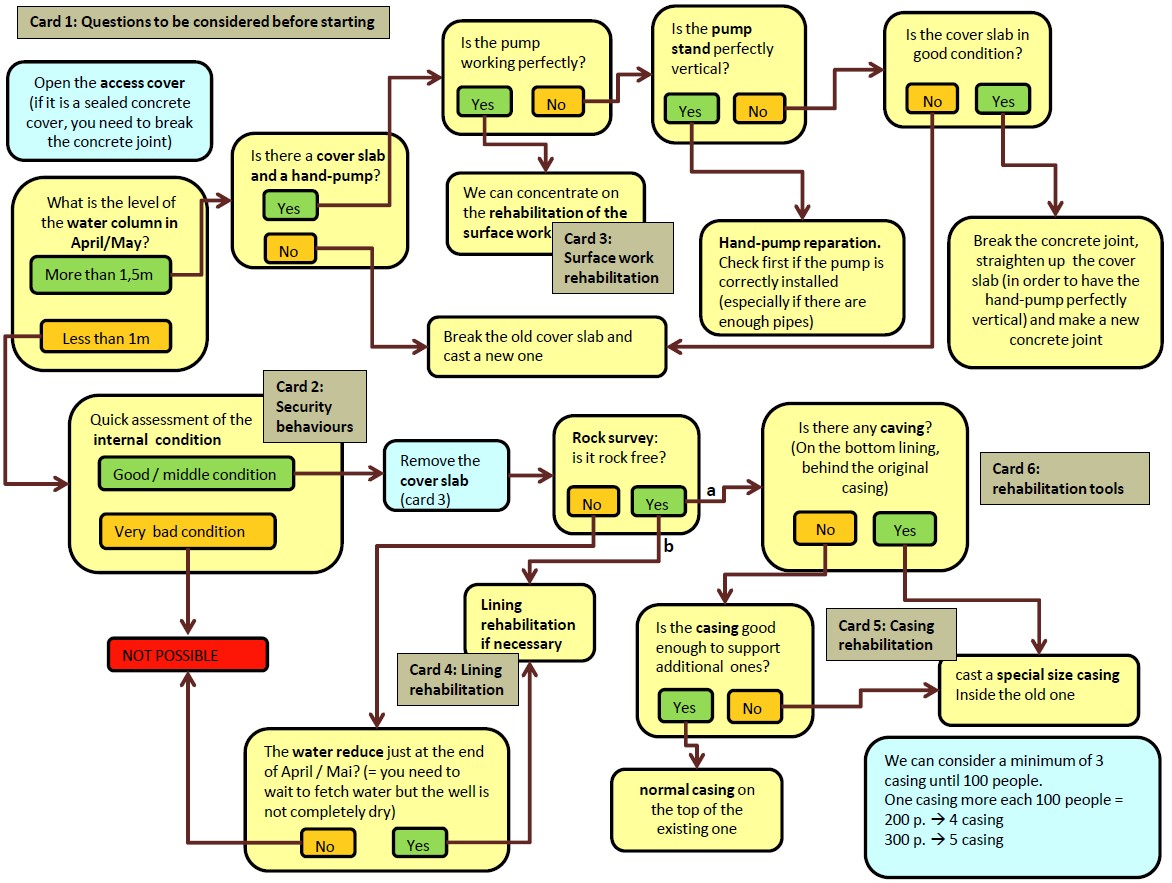Kansuron is a small community (55 people – 10 pots) near Kamakwie. It is one of the first community where has been launched the HHWT approach, in 2012.
In July 2015 a visit has been organised where representatives of similar small communities from the south of the district of Bombali, near Makeni, have been invited to see how the people of Kansuron are managing to chlorinate their water every morning for each household and then how they organize themselves to get money to refill their stock of chlorine.
At the same visit, were present people from Freetown such as Mr. Sam Goba, engineer of the Water Directorate, Miss Doris Bah the WaSH coordinator from the Ministry of Health, as well as M. Kandeh, assistant program manager of the Water Directorate of Bombali dt.
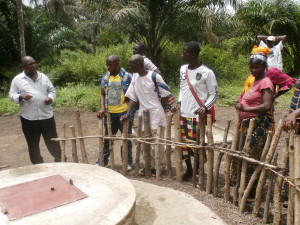
Mr. Sam Goba (left), explaining the importance of maintenance and safe clean water, in front of the improved water source


